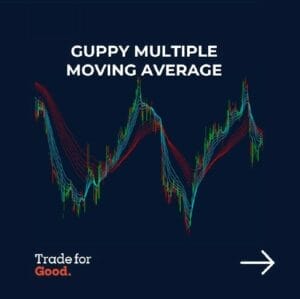
The Guppy Multiple Moving Average (GMMA) is a technical indicator designed to anticipate potential price breakouts in an asset.
The GMMA utilizes exponential moving averages (EMAs) to highlight discrepancies between price and value in a stock
Key Takeaways:
- The GMMA identifies changing trends, breakouts, and trading opportunities.
- It consists of a short-term group of moving averages (MAs) and a long-term group of MAs. When these groups cross, it indicates trend changes.

Limitations of the GMMA
The main limitation of the Guppy Multiple Moving Average (GMMA), and the exponential moving averages (EMAs) it is composed of, is that it is a lagging indicator.
EMAs reflect average prices from the past and do not predict the future.

Waiting for the averages to cross over can result in entry or exit signals that are too late, as prices may have already moved significantly.
What Does the GMMA Tell You?
The degree of separation between the short and long-term moving averages (MAs) can indicate trend strength.
Wide separation suggests a strong prevailing trend, while narrow separation suggests a weakening trend.
Crossovers of the short- and long-term MAs represent trend reversals.

-
How to find where the indicators are and add them to charts?
Read More
You can download the offline guide here Guppy Multiple Moving Average Indicator Guide

What you learn here has been used in our Trade for Good software.
Click on the button to find our software education videos.
You can read more of our educational articles in the Trade for Good Learn section
Trade for Good Learn

